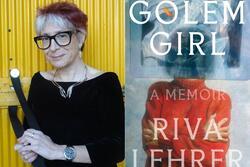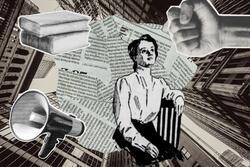The Identity of the Teenage Girl, From Mary Shelley to Lisa Frankenstein
The inventor of science fiction was a teenage girl.
Mary Shelley wrote Frankenstein at age 18, creating one of the most enduring works of English literature, as part of a challenge to write the most chilling ghost story. Shelley was everything that a teenage girl, especially in the Romantic period, shouldn’t be. She had a turbulent love life (including having extramarital sex, something her peers found shocking), was a writer when women of her generation were expected to be homemakers, wrote feminist works, eloped with the notorious poet Percy Shelley (who she ran away with to Switzerland), and practiced free love. And she did this all before she turned 20!
The peculiarities in her life started early. Her father, William Goodwin was an anarchist and book publisher. Her mother (who died 11 days after Shelley’s birth), Mary Wollstonecraft, wrote A Vindication of the Rights of Woman, one of the first feminist philosophical texts. A Vindication argued for female equality, especially regarding education. Wollstonecraft’s genius, as well as her feminist ideology, was passed down to her daughter.
Mary Shelley, in all her unconventional womanhood, wrote the ultimate tale of misfits. Frankenstein meditates on nature, human limitations, the price of advancement, and the repercussions of the pursuit of knowledge. In the formative Gothic novel, Victor Frankenstein creates his monster and is seduced by reason and logic to his (and everyone in his life’s) detriment.
The creation of Frankenstein’s monster embodies Enlightenment and industrial ideals of unfettered innovation that often trumps humanity. The scenes where Frankenstein’s monster lives a simple life in the countryside are the ones where he is the least destructive. Shelley rebukes the Enlightenment fetishization of science. The hubris Victor displays in creating a human being and then abandoning it is a result of modernity and detachment from human nature. It's one of my favorite novels, and it’s a classic for a reason.
Interestingly, in Frankenstein, this bringer of life is a man, something traditionally designated for women. Shelley seemed to argue that a man cannot sustain or create life (especially poignant, seeing as her father was a single dad for part of her life). The monster’s inability to integrate meaningfully into human life, Victor’s rapid abandonment, and lack of responsibility indicate that Shelley implies men alone cannot sustain life.
Similarly, the scholar Anne K. Mellor argues in an afterword to the book that Shelley portrays Victor Frankenstein’s inability to control and communicate with his monster as an allegory for the tension of motherhood. For example, Victor feels immensely guilty for the murders the monster commits, much as a mother might feel guilt for a child’s actions.
Many adaptations of Frankenstein have been made, but my favorite is the one where the creator of the monster is a woman. The revelatory movie is the 2024 horror comedy, Lisa Frankenstein. At the beginning of the movie, we learn three essential things about Lisa: she has trauma from her mother’s death, a perfectly 80s wardrobe, and a fascination with the macabre. Lisa feels out of place in the world until one night she stumbles into a cemetery and speaks to the grave of a young man. After Lisa leaves, lightning strikes the grave, and a creature is born. Instead of an arrogant college student creating life and then leaving, Lisa is initially scared but eventually realizes her creature is her responsibility.
The unintended life that Lisa inadvertently creates feels like a metaphor for being a teenage girl. The monster is something she desperately tries to keep to herself, but (spoiler alert) it kills many people in her life, and eventually her. This big, important thing in her life is also the thing that absolutely no one can know about, or else her creature will be in danger.
I believe this represents how keeping our big, fierce feelings to ourselves eventually will eat us alive. The way that teenage girls feel is important, yet our society treats things that teenage girls are into as trivial, even as our interests become mainstream culture.
Existing outside of what’s expected of a teenage girl is hard. But Lisa Frankenstein makes a case that the only time we can experience happiness is when we are expressing ourselves fully, just as Shelley did that one fateful summer in Switzerland.
Lisa’s life mirrors Mary Shelley's in a way that excited a literature-loving heart as I watched the film. For example, Lisa and Shelley’s mothers both die at young ages and both their fathers (who couldn’t quite understand them) re-marry, and both are betrayed by their stepsisters. They each have inclinations for men who are objectively terrible for them, are obsessed with cemeteries, and are deeply unconventional. I thought the blending of Mary Shelley’s (frankly wild) biography with the basic plot beats of Frankenstein was genius.
Frankenstein and the movie Lisa Frankenstein, though so different in presentation, left me thinking about the same questions. What is the line between embracing modernity and history? What makes us individual, and what makes us human? Is there a right way to be a teenage girl? Both stories have taught me that there is no one answer to any of these questions.
This piece was written as part of JWA’s Rising Voices Fellowship.







